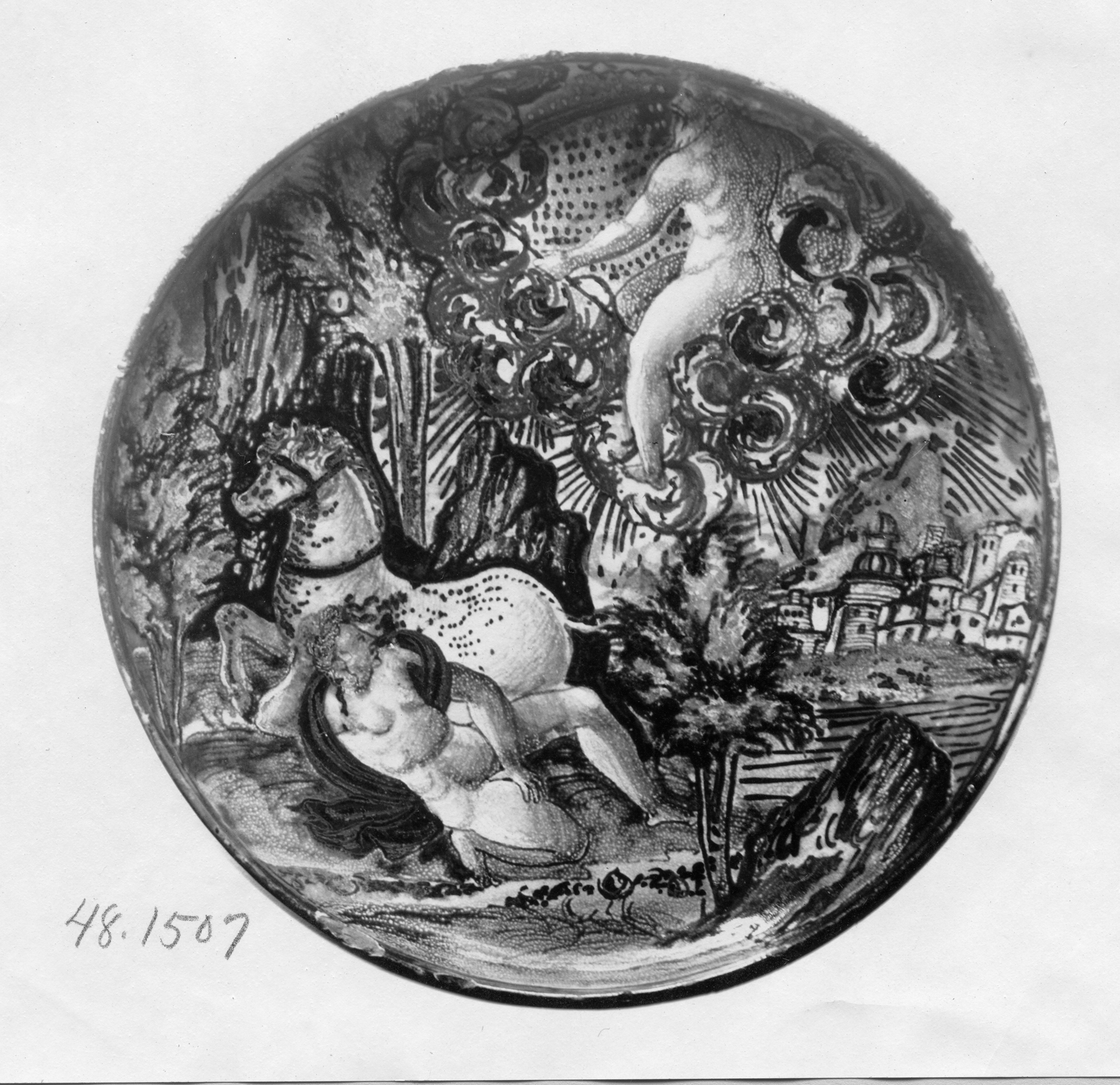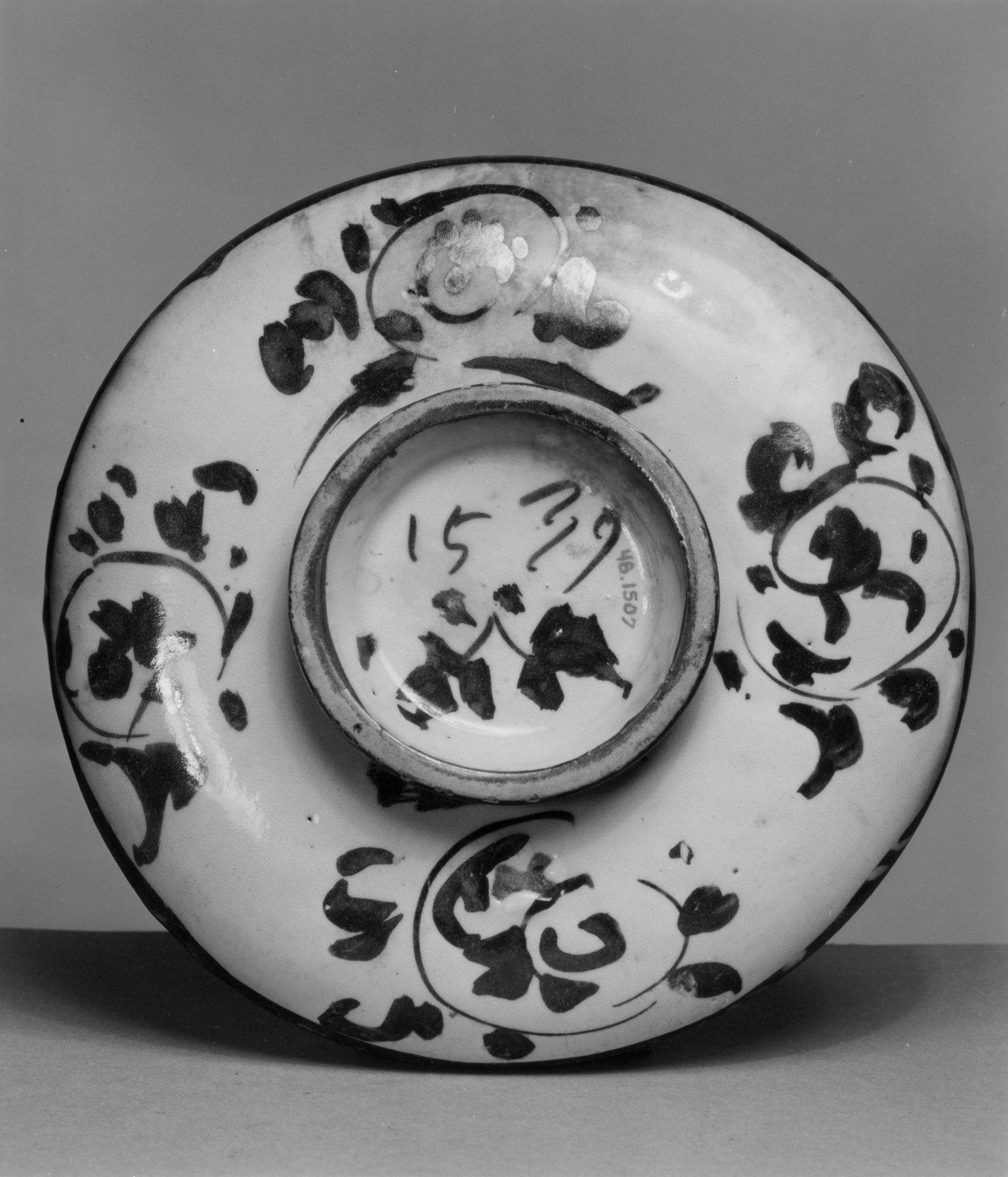Dish on a Low Foot with Cronos and Philyra
(Renaissance Europe )
This dish portrays the sea nymph Philyra and Cronos, a leader of the Titans, the generation of divinities preceding the Olympian gods. According to Greek mythology, Cronus fell in love with Philyra, and when his wife Rhea discovered them together, he quickly transformed himself into a horse to escape detection. Cronos is pictured here in the upper right corner, holding a scythe and sitting in a sunburst ringed with clouds. On a hillside at the left, Philyra reclines on her right elbow; behind her, Cronos is transforming himself into a horse. This composition, painted in red-gold and dark ruby luster, is characteristic of “istoriato” (tells a story) imagery, which often featured scenes from Classical antiquity. The back is bluish-white and is decorated in ruby and red-gold lustre with four spirals converted into floral scrolls; in the center, in lustre, is a floral motif surmounted by the date, "1539." It was likely made in Urbino or Gubbio, cities with maiolica workshops that specialized in luster wares. For more on “istoriato,” see 48.1487; for additional information on “maiolica,” see 48.1336.
Inscription
Provenance
Provenance (from the French provenir, 'to come from/forth') is the chronology of the ownership, custody, or location of a historical object. Learn more about provenance at the Walters.
Don Marcello Massarenti Collection, Rome; Henry Walters, Baltimore, 1902, by purchase; Walters Art Museum, 1931, by bequest.
Geographies
Italy, Gubbio (Place of Origin)
Measurements
H: 1 15/16 x Diam: 9 7/16 in. (5 x 23.9 cm)
Credit Line
Acquired by Henry Walters with the Massarenti Collection, 1902
Location in Museum
Not on view
Accession Number
In libraries, galleries, museums, and archives, an accession number is a unique identifier assigned to each object in the collection.
In libraries, galleries, museums, and archives, an accession number is a unique identifier assigned to each object in the collection.
48.1507




